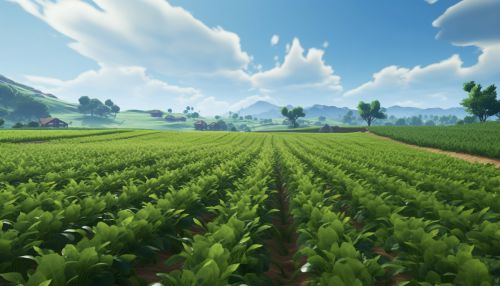Crop Rotation
Introduction
Crop rotation is the practice of growing different types of crops in the same area in sequenced seasons. It is done so that the soil of farms is not used for only one set of nutrients. It helps in reducing soil erosion and increases soil fertility and crop yield.
History
The concept of crop rotation has been a cornerstone of agricultural practices for thousands of years. Ancient farmers realized the importance of changing the type of crop grown on their fields each year. The first known description of crop rotation dates back to Roman times, in the treatise of Cato the Elder on farming, "De Agri Cultura".


Benefits of Crop Rotation
Crop rotation has several benefits, both for the soil and the crops themselves. These benefits include:
Soil Fertility
Crop rotation helps to maintain or increase soil fertility. Different crops have different nutrient requirements and change the chemical makeup of the soil. By rotating crops, farmers can balance the nutrient demands on the soil, preventing the depletion of certain nutrients.
Pest and Disease Control
Crop rotation can help control pests and diseases that can become established in the soil over time. By changing the crops each year, the life cycle of pests or diseases is interrupted, reducing their numbers.
Weed Management
Crop rotation can also assist in weed management. Different crops compete with weeds in different ways, and by changing the crop each year, the weed population can be managed and reduced.
Crop Yield
Crop rotation can increase crop yield. By improving soil health and reducing pests, diseases, and weeds, crop rotation can lead to healthier, more productive crops.
Types of Crop Rotation
There are several types of crop rotation, including:
Simple Crop Rotation
This involves growing two different crops in alternate years on the same piece of land. For example, a farmer might grow wheat one year and then switch to soybeans the next.
Multiple Crop Rotation
This involves growing three or more different crops in succession on the same piece of land. This type of rotation is more complex and requires careful planning to ensure that the needs of all crops are met.
Ley Farming
This is a system of crop rotation where the field is alternately seeded for grain and left fallow (ley). The fallow period allows the soil to recover and build up nutrients.
Implementing Crop Rotation
Implementing crop rotation requires careful planning and consideration of several factors, including:
Soil Type
Different crops require different soil types. Farmers must consider the type of soil on their land and choose crops that will thrive in those conditions.
Climate
The climate of the area will also influence the choice of crops. Some crops require a lot of sun and heat, while others prefer cooler, wetter conditions.
Market Demand
Farmers must also consider the market demand for different crops. There is no point in growing a crop that cannot be sold.
Challenges of Crop Rotation
While crop rotation has many benefits, it also presents some challenges. These include:
Complexity
Crop rotation requires careful planning and management. Farmers must consider the needs of each crop and how they will affect the soil and other crops.
Economic Factors
Crop rotation can be economically challenging. Some crops are more profitable than others, and farmers must balance the benefits of crop rotation with the need to make a profit.
Future of Crop Rotation
With the increasing awareness of sustainable farming practices, the future of crop rotation looks promising. Advances in technology and farming practices are making it easier for farmers to implement crop rotation, even on a large scale.
